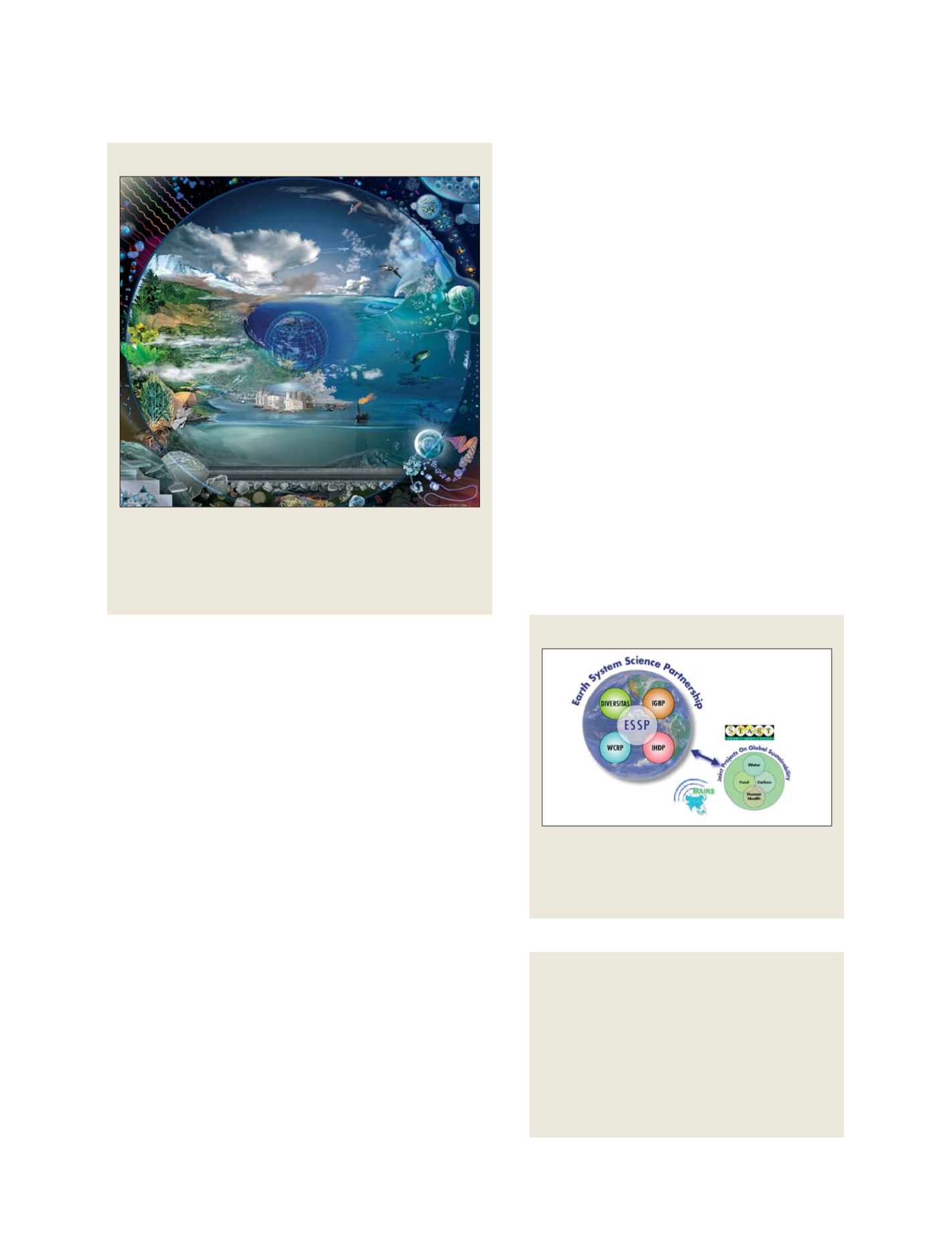

[
] 234
ronment. The research community in general, and ESSP
more specifically, would be unable to pursue Earth
system science without such observations. Much of the
research being done in ESSP and in the partner
programmes helps to understand the processes that
determine the behaviour of the coupled human-envi-
ronmental Earth system. As such, the research
community itself is a significant source of observations
on the global scale. In addition, there are important in
situ monitoring efforts underway for the atmosphere,
oceans and terrestrial systems. Satellite observations
provide an indispensable source of information and have
tremendously expanded our ability to monitor and
assess global-scale phenomena.
The ESSP and its partner programmes, such as the Group
on EarthObservations (GEO), can foster and enable connec-
tions between the observing and research communities.
Without these connections, the translation of observations
to useful informationwould bemuchmore difficult and less
efficient. Producing information and answers relevant for
sound decision-making requires increased and sustained
collaboration between the research, in situ monitoring and
satellite remote sensing communities. This collaboration is
often challenging in terms of human, institutional and finan-
cial capacity, but absolutely essential to making progress in
the nine critical societal benefit areas outlined by GEO.
Answering such questions requires new tools, both observational
and modelling, that to a much larger extent couple the social and
natural science approaches and methodologies.
The research community has responded to these needs by forming
the Earth System Science Partnership, a partnership among the four
major international programmes on global environmental change
research: Diversitas, an international programme of biodiversity science;
the International Geosphere-Biosphere Programme (IGBP); the
International Human Dimension Programme on Global Environmental
Change (IHDP); and the World Climate Research Programme (WCRP).
The ESSP has four projects that concentrate on different crosscut-
ting issues in Earth system science, which transcend international and
disciplinary boundaries. These are the Global Carbon Project (GCP),
the Global Environmental Change and Food Systems (GECAFS)
project, the Global Water System Project (GWSP), and the Global
Environmental Change and Human Health (GECHH) project. In addi-
tion, capacity building is addressed through the Global Change System
for Analysis, Research and Training project, and the Monsoon Asia
Integrated Regional Study is a crosscutting initiative that looks at
coupled human-environmental systems in a regional context.
The ESSP and the research going on within it, and within its compo-
nent programmes, is an excellent example of the research community
responding to societal needs and questions.
The role of global observations
If the Apollo images stimulated a rediscovery of the science of the
Earth system, modern global observation systems, both remote
sensing and in situ, underpin our ability to understand how the Earth
system works, and how we affect and are influenced by our envi-
Depiction of the complexity and connectedness of the Earth system
The Earth in its entirety is at the centre, since it is the whole system that we
need to understand. Increasing detail is seen towards the edges of the image,
showing individual processes such as chemical reactions, air-sea exchange,
and emissions from individual pollution sources. Evident in the image is the
lack of borders between the components of the system, and the pervasive
presence and influence of humans
The Earth System Science Partnership
The ESSP is a partnership of four international global
environmental change programmes Diversitas, IGBP, IHDP, and
WCRP. It has joint projects on water, food, carbon and health;
an integrated regional study looking at the monsoon Asia
region, and a capacity building project
Website addresses for ESSP projects and
sponsoring programmes
ESSP
www.ess-p.orgGCP
www.globalcarbonproject.orgGECAFS
www.gecafs.orgGECHH
Website under development
GWSP
www.gwsp.orgSTART
www.start.orgIHDP
www.ihdp.uni-bonn.deDIVERSITAS
www.diversitas-international.orgWCRP
www.wmo.ch/web/wcrpIGBP
www.igbp.netImage: commissioned by IGBP from UK artist Glynn Gorick
S
OCIETAL
B
ENEFIT
A
REAS
– E
COSYSTEMS
















